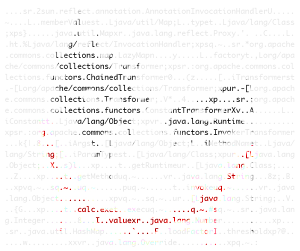Setup
ARTDroid requires the following dependencies:
- root privilege available
- busybox installed
Push the following files (paths are from repo root dir) to the device:
1
2
3
4
5
adb push adbi/hijack/libs/armeabi/hijack /data/local/tmp
adb push examples/classes.dex /data/local/tmp/target.dex
adb push examples/arthook_demo/libs/armeabi/libarthook.so /data/local/tmp
adb push scripts/init.sh /data/local/tmp
adb root
How to use
Include the compiled ARTDroid static library in your actually hooking code. In your code call the ARTDroid init function arthook_init_conf specifing as its first argument the configuration file. Let’s discuss how to use ARTDroid by means of the demo code included in the directory “example” of this repo.
Suppose you want to hook the method android.telephony.TelephonyManager’s getDeviceId. First, write your own patch code using the Java language, the following snippet code is extracted from the example:
1
2
3
4
5
6
7
public String getDeviceId() {
Log.d(TAG, "FAKE GETDEVICEID ");
Utils.saveStackTraces();
String key = "android/telephony/TelephonyManagergetDeviceId()Ljava/lang/String;";
//Log.d(TAG, "obj =: " + this.toString() + this.getClass().getName());
Object[] args = {};
return (String) callOriginalMethod(key, this, args) + "w00t!!";
Let’s discuss the above code (we call it patch code). The “key” variable is used to unique identify the target methods in ARTDroid data structures. It is composed by concatenation of the following values: the Class’ name, the method’s name and finally its signature. ARTDroid exposes to Java the method callOriginalMethod which permits to call the original method (identified by “key”, passing its “args”) The patch code could contain checks on the input arguments or code to manipulate the object “this” and of course, it could modify the return value or simply return a static value (forever true).
Second, create a JSON formatted file containing the patch code info. In our example we use the following config file:
1
2
3
4
5
6
7
8
9
10
11
{"config": {
"debug": 1,
"dex": "/data/local/tmp/target.dex",
"hooks": [
{
"class-name": "android/telephony/TelephonyManager",
"method-name": "getDeviceId",
"method-sig": "()Ljava/lang/String;",
"hook-cls-name": "org/sid/artdroidexample/HookCls"
}]
}}
Finally, to initialize the ARTDroid framework, include in your code a call to function arthook_init_conf specifing as its first argument the JSON configuration file. The following example shows how to init the framework specifing “/data/local/tmp/test.json” as the configuration file.
1
2
3
4
5
configT_ptr configuration = arthook_init_conf("/data/local/tmp/test.json");
if( configuration == NULL){
LOGG("ERROR INIT!!\n");
return;
}
All calls directed to the method getDeviceId will be redirected first to the patch code, then to the original method by the ARTDroid’s core engine.
The shared library produced by compiling the example code can be injected in the target process using the tool hijack. Put in mind to disable SELinux before to inject the library, otherwise it will prevent your stuff from working properly. To inject the compiled library in a target app, execute the following commands in a shell on the device:
1
2
3
cd /data/local/tmp
sh init.sh (run only once to prepare the environment)
sh runhijack.sh -h
You can inject the hooking library either in a running app or in the zygote master process. The latter approach permits to inject the hooking library in all the future apps forked from the zygote. Once the hooking library is loaded in the target app, debug/internal log messages are stored in the file /data/local/tmp/artdroid.log and general logs are printed in logcat using the tag “artdroid”.
How to report bugs / suggestions
To report bugs or suggestions, you can use either the github issues system or the ARTDroid google group available at this address. Otherwise you can push an email to me at valerio.costamagna\at\di.unito.it.
